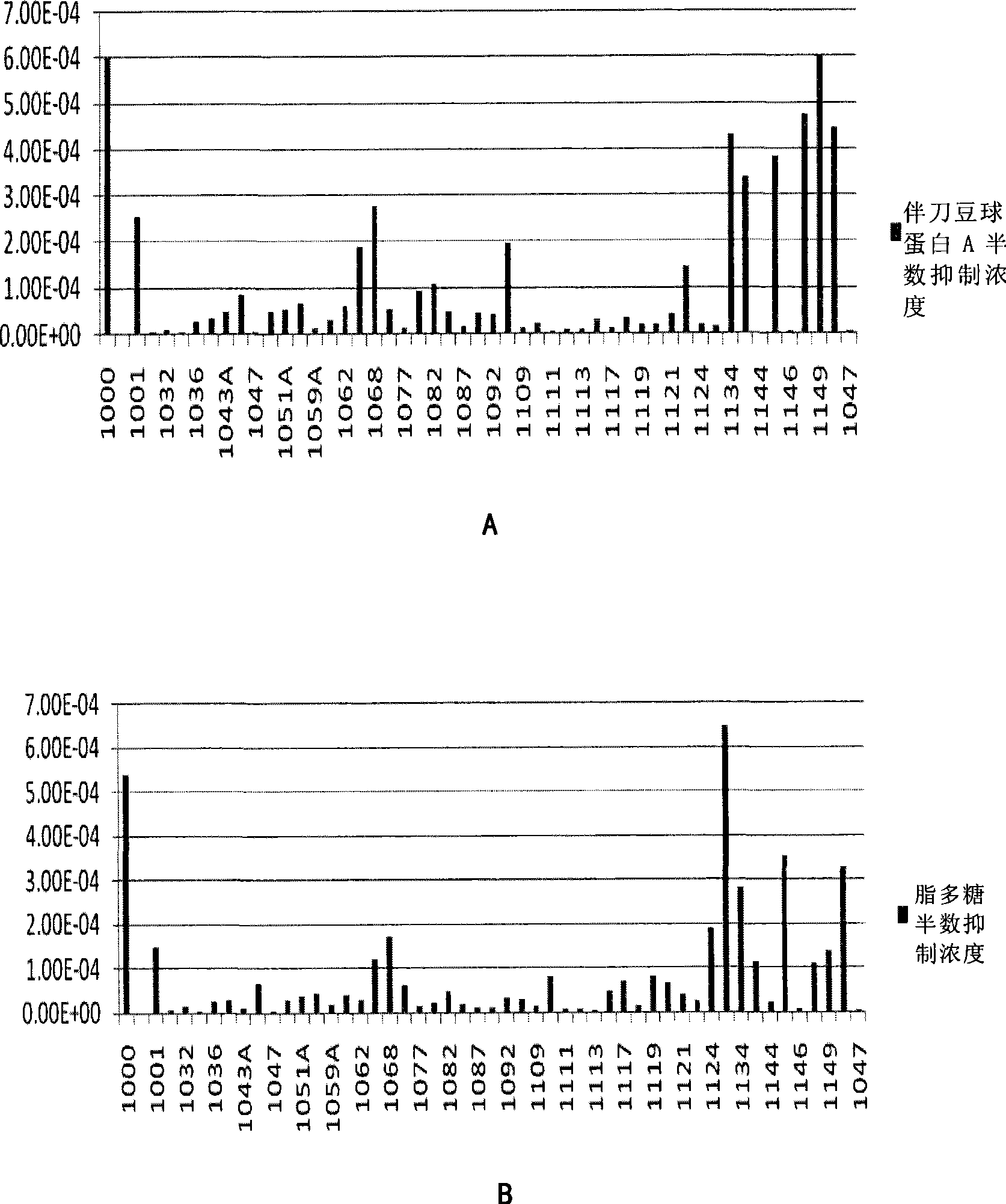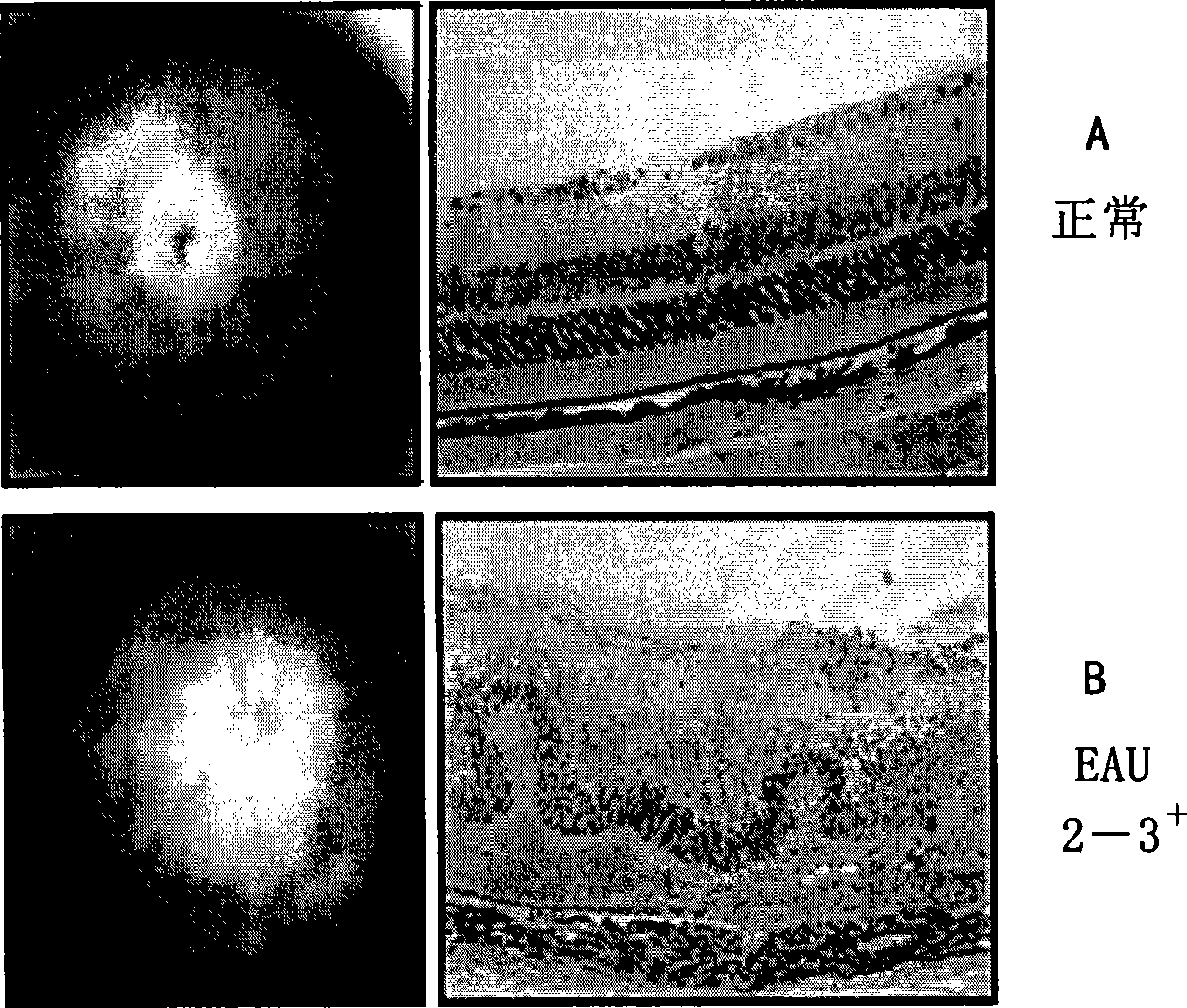Use of sinomenine derivates in treating autoimmune disease through antagonism TNF-alpha signaling pathway
A technology for autoimmune diseases and signaling pathways, applied in allergic diseases, drug combinations, pharmaceutical formulations, etc., can solve the problems of high price, reduced curative effect, and large dosage
- Summary
- Abstract
- Description
- Claims
- Application Information
AI Technical Summary
Problems solved by technology
Method used
Image
Examples
Embodiment 1
[0048] Preparation of compounds of formula I
[0049] The compound of formula I (code number 1032, which will be used in the following examples) can be obtained by referring to the method of Chinese patent application CN200510024478.9.
Embodiment 2
[0051] Determination of Immunosuppressive Activity of Sinomenine Derivatives
[0052] First, specific mitogens (ConA, LPS) of T cells or B cells were added to the culture system of mouse spleen cells to stimulate the proliferation of T or B cells, and then respectively in different concentration gradients (when measuring the IC50 of the first group of compounds, Select the concentration near the sudden change area of the curve as the gradient, and then when each group of compounds is measured, make corresponding adjustments according to the concentration gradient of the first group) add sinomenine (as shown in formula II, code number 1000, in the following examples) This code will be used) and its derivatives (including 1032 obtained in Example 1), after 48 hours with 3 The H incorporation method was used to measure the proliferation of lymphocytes, and the IC was calculated 50 value to measure its effect on the biological activity of immune cells.
[0053] see results fi...
Embodiment 3
[0056] Determination of Toxicity of Sinomenine Derivatives
[0057] Add sinomenine (as shown in formula II) and its derivatives (including 1032 obtained in Example 1) with different concentration gradients in the culture system of mouse spleen cells, add MTT (thiazolium) in 42 hours, 48 The reaction was terminated after 1 hour, and the OD value was measured with a spectrophotometer, and the CC50 value was calculated by the following formula to characterize the toxicity. Taking sinomenine as a control, the levels of each derivative relative to sinomenine were observed.
[0058]
[0059] see results figure 2 .
[0060] The results showed that the toxicity of several derivatives was significantly lower than that of sinomenine (code 1000), and their safety was better.
[0061] Based on the data in Examples 1 and 2, compound 1032 with high activity and low toxicity was selected from many derivatives for the following curative effect and mechanism research.
PUM
 Login to View More
Login to View More Abstract
Description
Claims
Application Information
 Login to View More
Login to View More - R&D
- Intellectual Property
- Life Sciences
- Materials
- Tech Scout
- Unparalleled Data Quality
- Higher Quality Content
- 60% Fewer Hallucinations
Browse by: Latest US Patents, China's latest patents, Technical Efficacy Thesaurus, Application Domain, Technology Topic, Popular Technical Reports.
© 2025 PatSnap. All rights reserved.Legal|Privacy policy|Modern Slavery Act Transparency Statement|Sitemap|About US| Contact US: help@patsnap.com



